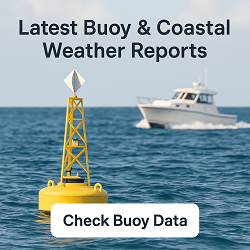New Canton, VA Weather Forecast and Current Conditions
Current Conditions From Nearby Station Switch to Metric Units
Feels Like 42°F
at
Current Conditions From Nearby Station Switch to Metric Units
Feels Like 42°F
at
Point Forecast at a Glance







7-Day Temperature Trend
Week Ahead Summary
High temperatures climb from 46°F to a high of 70°F by week's end. Some rain possible with at least 2 days showing precipitation chances of 20% or higher.
Climate Context
Temperatures are expected to be near normal for this time of year, with highs around 59°F and lows around 36°F.
This Date in Weather History
1940 - An Armistice Day storm raged across the Great Lakes Region and the Upper Midwest. A blizzard left 49 dead in Minnesota, and gales on Lake Michigan caused ship wrecks resulting in another 59 deaths. Up to seventeen inches of snow fell in Iowa, and at Duluth MN the barometric pressure reached 28.66 inches. The blizzard claimed a total of 154 lives, and killed thousands of cattle in Iowa. Whole towns were isolated by huge snowdrifts.
More on this and other weather history
New Canton, VA 7 Day Weather Forecast Details
Tuesday Nov 11

Day: Sunny, with a high near 46. West wind 10 to 14 mph, with gusts as high as 24 mph.

Night: Partly cloudy, with a low around 34. Southwest wind 6 to 9 mph, with gusts as high as 21 mph.
Wednesday Nov 12

Day: Sunny, with a high near 61. Southwest wind 10 to 16 mph, with gusts as high as 26 mph.

Night: Mostly clear, with a low around 37. West wind 5 to 10 mph, with gusts as high as 22 mph.
Thursday Nov 13

Day: Mostly sunny, with a high near 60. West wind 5 to 8 mph.

Night: Mostly clear, with a low around 31.
Friday Nov 14

Day: Sunny, with a high near 63.

Night: Mostly clear, with a low around 34.
Saturday Nov 15

Day: Mostly sunny, with a high near 59.

Night: Partly cloudy, with a low around 45.
Sunday Nov 16

Day: Mostly sunny, with a high near 70.

Night: A chance of rain after 7pm. Partly cloudy, with a low around 48. Chance of precipitation is 30%.
Monday Nov 17

Day: A chance of rain before 1pm. Mostly sunny, with a high near 65. Chance of precipitation is 30%.

Night: A slight chance of rain after 7pm. Partly cloudy, with a low around 40.
Sun & Moon Monthly
Sunrise 6:50 AM
Sunset 5:06 PM
Last Light 5:34 PM
Moonset 12:59 PM

Contiguous United States Extremes
Mon's High Temperature
100 at 2 Miles West Of Pala, CA
Tue's Low Temperature
10 at Mount Washington, NH and Snowshoe, WV
Weather Folklore
The factory smoke stack is more of a nuisance before a rain.

Current subscribers - login to your ClearSky account
About New Canton, VA
Content from Wikipedia, licensed under CC BY-SA 3.0.
How We Provide Better Local Weather
Current conditions: We use the nearest available station to your location - including professional MESONET/MADIS and local weather stations - often miles closer than regional airports.
Forecasts: National Weather Service point forecasts predict for your specific area, not broad regional zones, making them far more relevant to your location.

